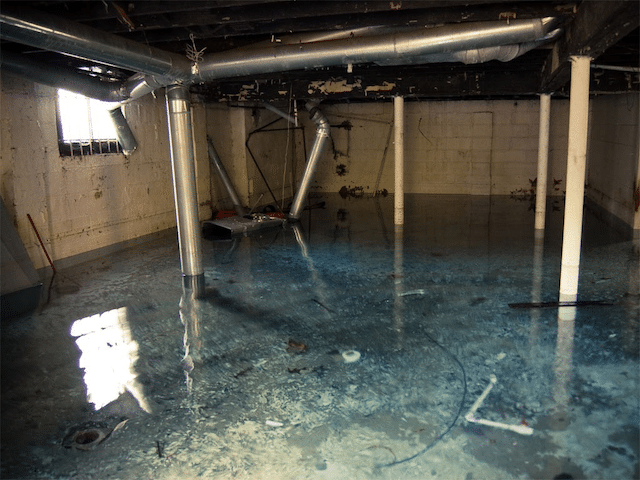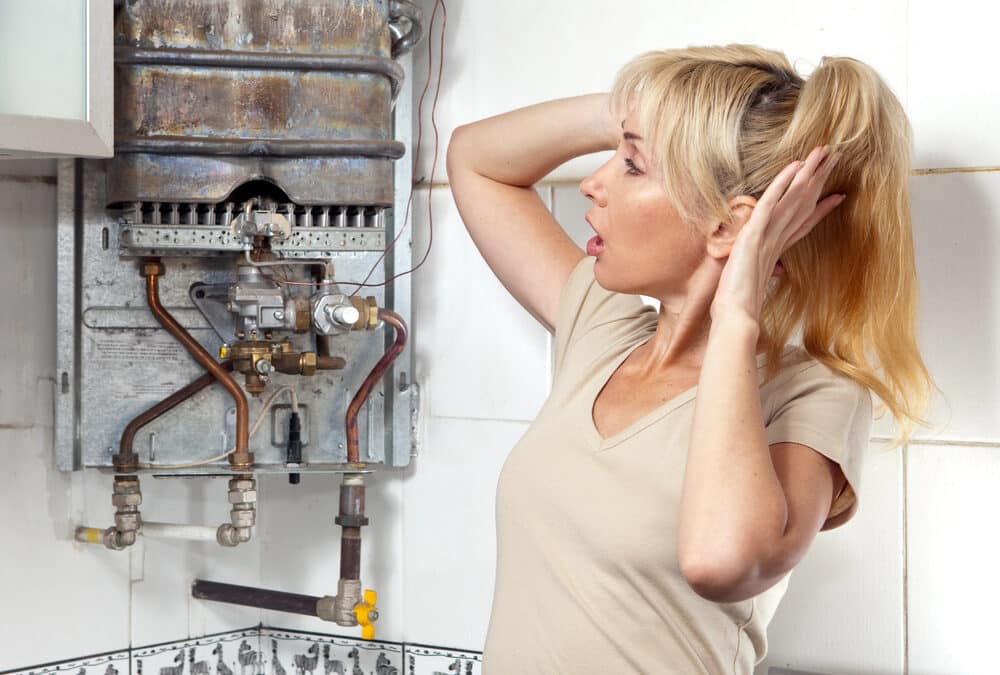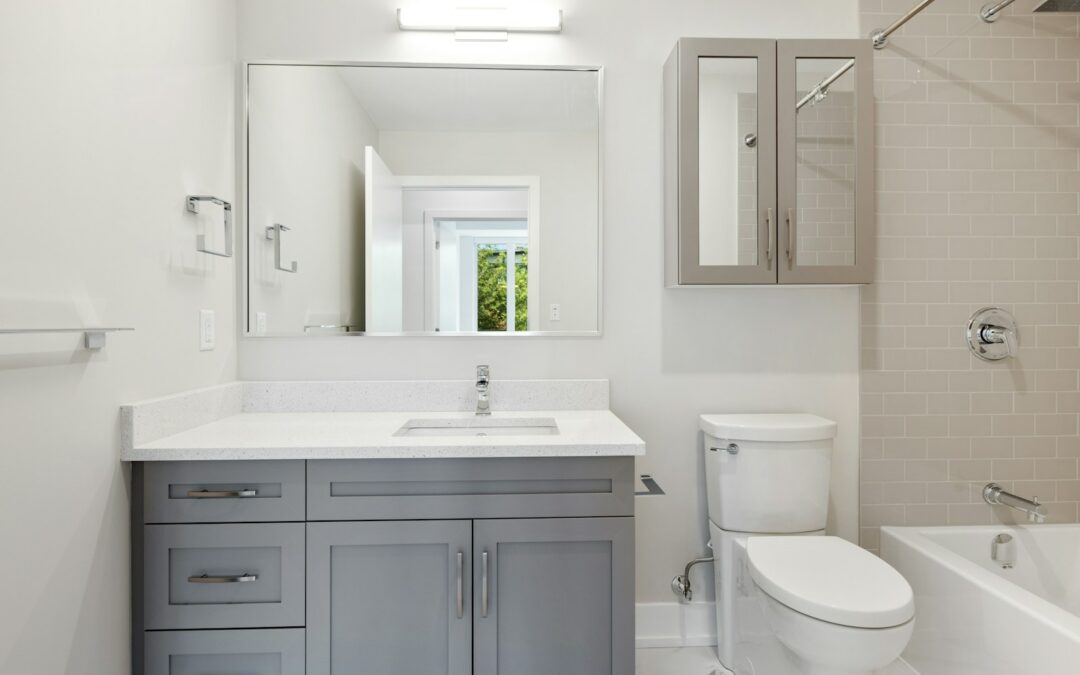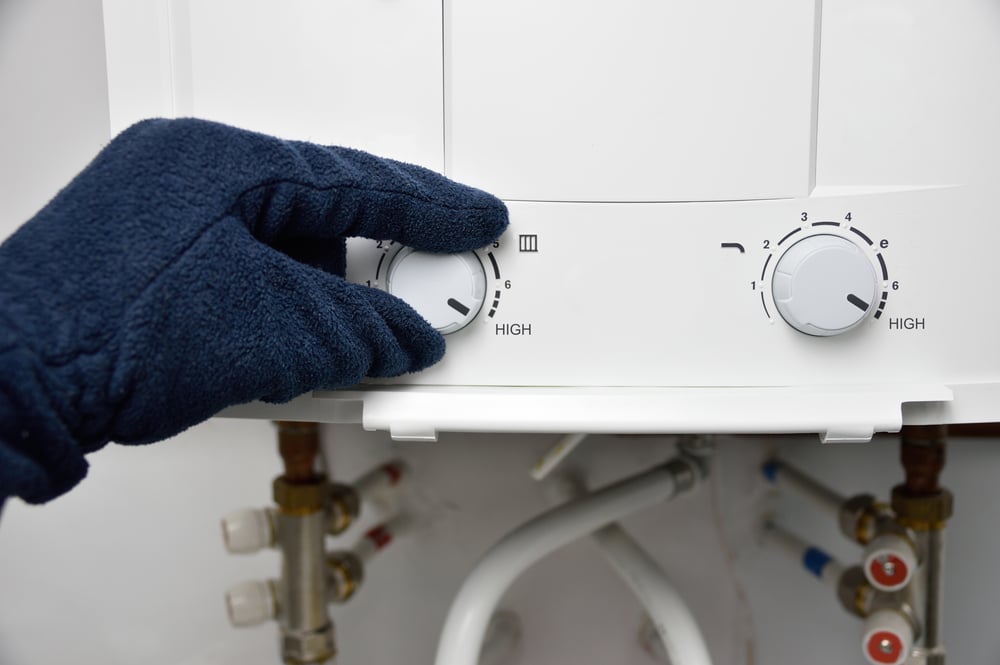We all know that feeling. You come home after a long day and all you want to do is relax in your own home, but as soon as you walk in the door, you are hit with the smell of humidity and mildew. You look down and see water seeping out from under the door of your basement. Your worst nightmare has come true; your basement has flooded. But what causes this to happen, and how can you prevent it? Keep reading to find out.
Causes Of A Flooded Basement
Flooding can occur in both wet conditions and dry conditions. Below, we will discuss what causes flooding in both cases.
Flooding During Dry Weather
Below, we discuss the causes of basement flooding during dry weather:
Schedule Service Online
Get a free estimate so you know what you're signing up for
"*" indicates required fields
For Emergency Services Call: 410-255-9300
1. broken or clogged sanitary lateral
Just like your roof’s shingles or your paved driveway, the sanitary sewer lateral will break down over time. If a lateral breaks down too much, several things can go wrong. For instance, tree roots might penetrate the pipe and cause it to collapse from gradual deterioration. These situations could block off the pipe entirely, leading to sewage backup.
If your home’s domestic wastewater floods your basement, the only way for the wastewater to drain is through the lowest fixture in your home, such as a floor drain, shower stall, sink, or toilet. Similar to other parts of your house that require maintenance (e.g., roofing, windows), your lateral will eventually need to be replaced by a licensed plumber.
A blocked sewer is usually the result of flushing items down the toilet that don’t belong. To avoid this, our team has put together a comprehensive list of things you should never flush or put down your drain. Remember: toilets are only for human waste and toilet paper!
2. Water supply-line break or hot-water tank failure
If a water pipe bursts or your hot-water tank fails, the resulting flood of water can easily damage your home’s foundation and lead to basement flooding. To prevent this from happening, it is important to check your home’s water pipes and fixtures regularly for any signs of leaks or corrosion. You should also have your hot-water tank serviced every few yearsto ensure that it is in good working condition.
3. Storm sewer backup
If the storm sewer system is overloaded during a heavy rainstorm, the resulting flooding can back up into your home through the floor drains or other openings in your foundation. This type of flooding is often referred to as “sewer backup. “
To prevent storm sewer backup, it is important to ensure that your home’s gutters and downspouts are in good working condition and are not clogged with debris. You should also have a backwater valve installed in your home’s sewer line to prevent sewage from backing up into your home in the event of a sewer blockage.
4. Foundation drainage failure
Subdivisions are sometimes situated in locations that experience more moisture than other areas. When this is the case, the foundation drainage system, through gravity or a pump, must continuously run to keep groundwater lower than the level of the basement floor.
Weeping tiles, otherwise known as gravity foundation systems, may degrade or get blocked with sediment over time. If this happens, the ground around the foundation will no longer drain properly.
Flooding During Wet Weather
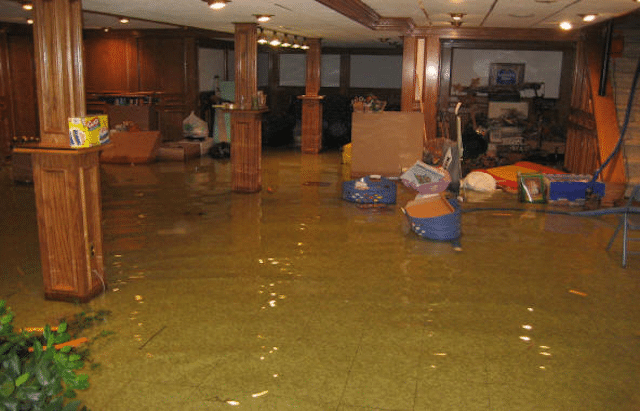
Flooding is more prevalent during wet weather due to increased rainfall, melting snow, and thawing ground. All of this places a strain on drainage systems that are already working hard to remove water from the surface and underground. Basements may flood for a variety of reasons when there is too much water present.
Below, we discuss some of the reasons for basement flooding during wet weather:
1. Sump Pump Failure
A sump pump is a small, electrically powered pump that is installed in the lowest part of your home’s basement or crawlspace. Its purpose is to remove water that has accumulated in the sump pit (a basin that collects groundwater) and to prevent flooding.
Sump pumps are used in homes that are located in flood-prone areas or areas with high water tables. They are also used in homes with basements that are below the ground level. Sump pumps are typically installed by a professional plumber or a waterproofing contractor.
If your sump pump fails, it can no longer remove water from the sump pit, causing the pit to fill up with water. When this happens, the water will eventually start to rise, causing basement flooding.
2. Sewer Backup
Sewer backup occurs when there is a blockage in the main sewer line that prevents sewage from flowing out of your home. When this happens, sewage can back up into your home through the floor drains or other openings in your foundation.
Sewer backup is often caused by a clog in the main sewer line. This can be caused by tree roots, grease, or objects that have been flushed down the toilet. A sewer backup can also be caused by a break in the sewer line.
3. Heavy Rains
Heavy rains can cause basement flooding in two ways:
First, if your gutters and downspouts are clogged with debris, they will not be able to properly channel rainwater away from your home. This can cause water to pool around your foundation, seep through cracks in the foundation, and eventually flood your basement.
Second, if the storm sewer system is overloaded during a heavy rainstorm, the resulting flooding can back up into your home through the floor drains or other openings in your foundation. This type of flooding is often referred to as “sewer backup.”
4. Flow Restriction
Flow restriction is another common cause of basement flooding during wet weather. This occurs when the drainage system is unable to remove water as quickly as it is coming in, causing the water level to rise and eventually flood the basement.
Flow restriction can be caused by a number of things, including:
1. clogged or blocked drains
2. soil compaction
3. collapsed or broken drain pipes
4. an inadequate drainage system, such as a single-pipe system
5. debris in the drain lines that prevents water from flowing freely
6. tree roots invading the sewer line
7. improper grading of the land around your home
Prevent Basement Flooding With These Simple Tips
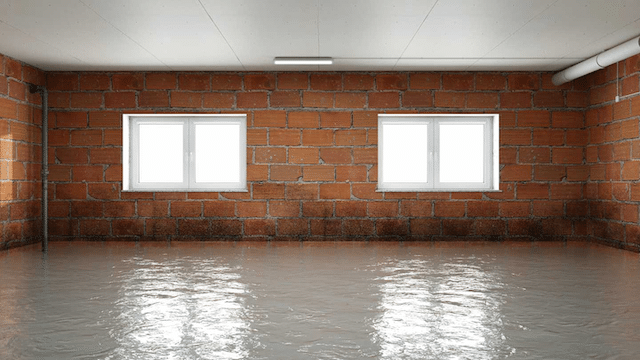
Basement flooding repair can be costly, so taking steps to prevent this occurrence from happening can help you save a ton of money. Here are some tips to help you prevent basement floods:
Grade Your Lawn Correctly
If your yard slopes towards your house instead of away from it, you’re at risk of basement flooding.
When it rains, the water needs to be diverted away from your home to prevent flooding and damage. The best way to do this is by ensuring that your lawn slopes towards city streets and gutters so that rainwater runs off of your property.
If you take a walk around your property and notice that your lawn slopes toward your outside walls, there are many landscaping options available to fix it.
Not only can you be creative with your design, but making a solution that fits your style will also decrease the risk of flooding.
Leave A Gap Between Your Mulch And Your Siding
Mulch is a great way to keep your plants healthy and looking their best. Unfortunately, it can also be the culprit behind basement flooding if it’s not applied correctly.
If you’ve ever seen mulch piled up on top of a home’s siding, you know how bad this can look. But what you may not know is that this can cause serious problems.
Mulch absorbs water, which means it can trap moisture against your home’s siding and walls. In combination with the rainwater, this trapped moisture can lead to leaks in your basement.
To prevent this from happening, make sure to leave a gap between your mulch and the siding of your home.
Make Sure Downspouts Are Free From Debris
Downspouts play an important role in keeping water away from your home’s foundation. But if they’re clogged with leaves and other debris, they won’t be able to do their job properly.
When you’re doing your spring cleaning, make sure to clear out the debris from your downspouts and check for any signs of damage. If there are any leaks or other issues, repair them as soon as possible.
Check Your Grading Or Waterproofing System
If you have a grading or waterproofing system around your home, it’s essential to inspect it yearly. This system is designed to divert water away from your home and prevent flooding, so it’s important that it’s working correctly.
Check for signs of wear and tear, such as cracks in the foundation or missing pieces. If you find any damage, repair it immediately before any potential flooding occurs.
Grading systems can become unleveled over time and may need to be adjusted in order to prevent flooding. And if you have an existing waterproofing system, check for any signs of damage or wear and tear that could lead to leaks.
Clean Gutters Regularly
Cleaning your gutters is an essential part of preventing basement flooding. Leaves and other debris can clog gutters, which will cause water to overflow and pool around the foundation of your home.
Make sure to check for signs of clogs on a regular basis and clear out any debris as soon as possible. This simple step can help keep your basement dry and free from flooding.
Install A Water Softener
Hard water contains high levels of calcium and magnesium, which can cause damage to pipes over time. These minerals can also make it difficult for hot water heaters to function properly, leading to inefficient performance and higher energy costs.
Flooded Basement Cleanup: Things You Need To Do The Day After A Basement Flood

Note: To prevent electrical shock, be sure to turn off all power before entering the flooded area.
Photograph The Aftermath
Immediately grab your phone and take pictures and video of the inside and outside flooded areas before you start cleaning, even if you’re not planning to file an insurance claim.
If you want to get flood insurance to help cover flood damage, we suggest taking pictures of the damaged property first. Afterward, get rid of anything that could start growing mold– like clothes, bedding, pillows, etc., as well as cardboard boxes and paper bags. Lastly, dispose of any perishable food items.
Remove The Standing Water
Remove the standing water from your home as quickly as you can. If there are only a few inches, most wet vacs can remove it with no problem. If you don’t have one, though, see if you can buy, borrow or rent one until the job is complete.
It is best to contact a professional for major water damage. If the water damage is only minor, you can use towels to clean it up; however, immediately wash and dry them afterward to prevent mold growth.
Dry It Out
To prevent mold and mildew, use fans and dehumidifiers to circulate air. Keep dehumidifiers staged at least six to eight inches from basement walls for ideal air circulation. Wipe down and wash their filters about once a week to help the fan perform efficiently. Keep your air conditioning on at all times. Ditch any wet boxes.
Scrub Flooring
Mix one cup of chlorine bleach with one gallon of water to clean vinyl tile, linoleum, and other hard surfaces. While scrubbing, wear rubber gloves and protective eyewear to avoid injury and keep the room ventilated for safety.
Examine And Clear Gutters, Downspouts, And Drains
Check your basement steps and drains for any leaves, twigs, or mud. Put on some rubber gloves and clear it out if you see anything. Take off the drain screen and give it a thorough cleaning.
You may need to use a plunger or plumber’s snake to unclog the drain if it’s really mucked up. Finally, clean out any gutters and downspouts around your house.
Put Important Papers In The Freezer
If you need to save documents or papers that have been dampened, put them in the freezer as soon as possible. Store your belongings off the ground and use plastic storage bins rather than cardboard boxes to prevent deterioration from mildew growth.
Conclusion
Basement flooding can be a very destructive and expensive issue that needs to be addressed as soon as possible. Taking the right steps after it occurs will help reduce damage and prevent mold growth. Investing in preventive measures before flooding happens is also important, such as waterproofing your basement, cleaning gutters regularly, and installing a water softener. Following these simple steps will help you protect your home from costly water damage.
Need A Plumber? Contact Us!
We hope this article was helpful in helping you deal with basement flooding. If you need any professional help, contact us. Our plumbers are experienced and can quickly respond to your needs. We’re here to help get your home back in order so you can get back to living life!

